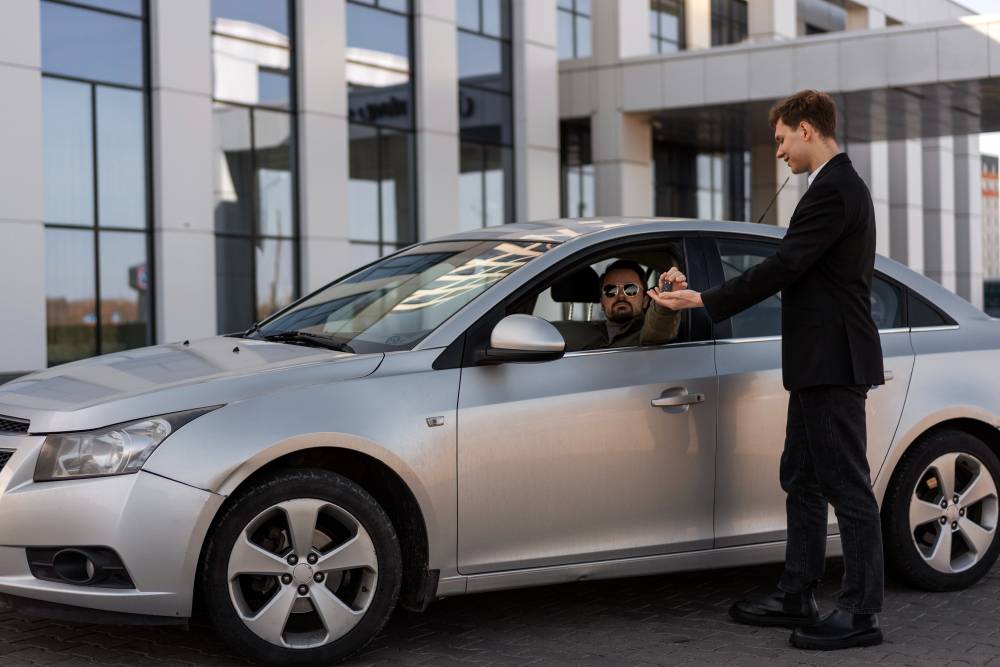Guidelines for Driving a Company-Owned Car
Driving a company-owned car comes with a unique set of responsibilities and expectations. For both employers and employees, understanding these guidelines is critical for maintaining safety, efficiency, and legal compliance. At the Law Offices of Andrew Zeytuntsyan, we help victims of car accidents, and we want to help ensure that local businesses and their staff know how to avoid injuries to ensure a lawful operation.
Employee Responsibilities
When an employee is entrusted with a company-owned vehicle, they are expected to adhere to specific guidelines and responsibilities. These responsibilities ensure the safety of the driver, the vehicle, and the public.
- Adherence to Traffic Laws: Employees must follow all traffic regulations and laws. This includes obeying speed limits, traffic signals, and road signs. Violations not only endanger lives but can also lead to fines, penalties, and increased insurance costs for the company.
- Vehicle Maintenance and Reporting: Regular maintenance of the vehicle is vital. Employees should conduct routine checks on oil levels, tire pressure, brakes, and other essential components. Any issues should be reported immediately to the employer to prevent accidents and ensure the vehicle’s longevity.
- Prohibition of Unauthorized Use: Company vehicles are meant for business purposes only. Personal use without explicit permission from the employer can lead to disciplinary action. Unauthorized use can also complicate insurance claims in case of an accident.
- Documentation and Record-Keeping: Maintaining accurate records of vehicle usage, including mileage, fuel consumption, and trip details, is essential. This data helps in monitoring vehicle performance and usage patterns, aiding in efficient fleet management.
Employer Responsibilities
Employers also have a set of duties to ensure that company-owned vehicles are used safely and responsibly. These responsibilities help in creating a structured and lawful framework for vehicle usage.
- Providing Safe and Well-Maintained Vehicles: Employers must ensure that the vehicles provided to employees are in good working condition. Routine inspections and timely maintenance are critical to prevent breakdowns and accidents.
- Comprehensive Insurance Coverage: Adequate insurance coverage is a legal necessity. Employers must ensure that their vehicles are covered for various risks, including accidents, theft, and damage.
- Clear Policies and Training: Employers should establish clear policies regarding the use of company vehicles. Providing training sessions on safe driving practices, emergency procedures, and the proper use of the vehicle can reduce the risk of accidents.
- Monitoring and Accountability: Implementing systems to monitor vehicle usage, such as GPS tracking and regular audits, helps in ensuring that the vehicles are used appropriately. Holding employees accountable for any misuse or negligence is also important.
Handling Accidents
Accidents involving company-owned vehicles can be stressful and complex. Both employees and employers need to know the appropriate steps to take immediately after an incident.
- Immediate Actions: Ensure safety first. If someone is injured, call emergency services immediately. If it’s safe to do so, move the vehicle to a secured location to avoid further accidents.
- Documentation: Collect all necessary information, including the other party’s contact details, insurance information, and any witness statements. Take photographs of the scene and any relevant road signs or signals.
- Reporting: Report the accident to the police and obtain a copy of the police report. Inform the employer and provide all collected information. Prompt reporting ensures that the insurance process can begin swiftly and accurately.
- Insurance Claims: Follow the company’s protocol for filing an insurance claim. Employers should assist employees in navigating the claims process to ensure it is handled efficiently and correctly.
Safe Practices and Preventive Measures
Ensuring safety on the road requires a proactive approach. Both employers and employees can implement practices to minimize risks and improve safety.
- Defensive Driving Courses: Encouraging or mandating defensive driving courses for employees can reduce accident rates.
- Regular Safety Meetings: Holding regular safety meetings to discuss any incidents, near misses, and updates on road safety laws keeps safety at the forefront of all employees' minds. It also provides a platform for addressing any concerns or suggestions.
- Technology Integration: Utilizing technology, such as advanced driver-assistance systems and telematics, can aid in monitoring driving behavior and improving safety. These technologies provide real-time feedback and can alert drivers to potential hazards.
- Encouraging Rest and Breaks: Fatigue is a risk factor for accidents. Employers should encourage drivers to take regular breaks during long trips and ensure they have adequate rest before getting behind the wheel.
Are You Searching for a Personal Injury Attorney or a Car Accident Attorney?
Driving a company-owned vehicle entails a shared responsibility between the employer and employee. At the Law Offices of Andrew Zeytuntsyan, we provide legal advice and support to help businesses and their staff members uphold these responsibilities effectively. If you need professional help with legal issues related to company-owned vehicles or if you’ve been injured, call us. Our experienced team is here to help you ensure compliance and protect your interests. We can schedule a consultation with a personal injury lawyer in your area.
